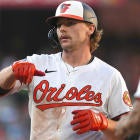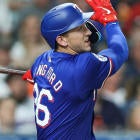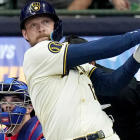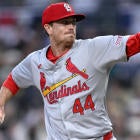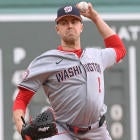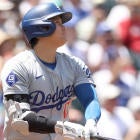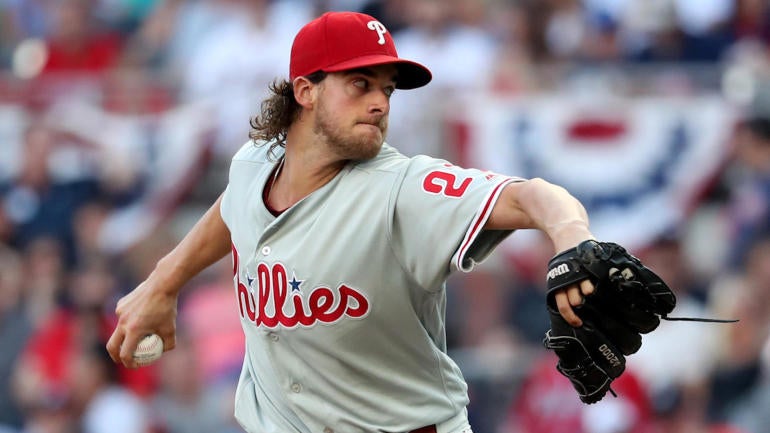
You will likely read this article and ask yourself, "What is wrong with Frank Stampfl?" Fear not. I ask myself the same question every day. It's the first week of December and I'm currently in the middle of my fifth Fantasy baseball draft for 2021 (it's a slow draft). Yes, I realize free agents still need to sign, bullpens need to shake out, injuries will occur. All that fun stuff. I just love drafting. On top of that, I like seeing where players are drafted throughout different points of the offseason to see who's moving up and down draft boards.
It's also worth noting that – while I've done five drafts – I'm not really in five different leagues already. Two of the drafts I've done are Draft Champions over at the NFBC, which are 50-round, 15-team rotisserie leagues. The reason the draft is 50 rounds is because there are no transactions in this league; no waiver wire or trading. You just set your lineup each week. One of the drafts is a 40-round, 12-team Best Ball league where you just draft and that's it. Your lineup is automatically set for you each week based on your best scores at each position. And the final two drafts I've done are mock drafts here at CBS with Scott White and the rest of the gang (Here are theH2H points results and Roto results). Anywho, below you'll find different observations as well as my early tendencies:
Pocket aces
Before you ask, no, I'm not referring to Adam Aizer. I recently had Bat Flip Crazy on the Fantasy Baseball Today podcast to ask him about different valuation systems in Fantasy Baseball. He's also well known in the industry for drafting starting pitchers with each of his first two picks. Now this strategy isn't for everybody and I realize that. There are many different ways to win in Fantasy Baseball, especially in Roto leagues. Taking elite starting pitchers with your first two picks means you'll miss out on the Trea Turners and Francisco Lindors of the world. For some, passing on five-category production early is heresy, and I get that.
However, you need pitching to compete, and that's true in any format. In Roto there are (usually) five hitting and five pitching categories. While elite starting pitchers cannot contribute in the saves category, they could give you a lead in the other four. And yes, pitching is inherently risky but that's why you draft two with your first two picks. It's like an insurance policy. If one falters or gets hurt, well, you still have the other ace. And if you hit on both pitchers like Scott White did with Gerrit Cole and Shane Bieber in Tout Wars, then you have a much better chance of winning your league. With all of the question marks surrounding pitching and workloads for 2021, I really like drafting two of my top-10 starting pitchers with my first two picks, but it doesn't stop there…
Four of the top 30
In four out of five of these drafts, I noticed that I drafted four starting pitchers ranked inside my top 30. I've done so many shows with Scott White that I'm starting to adopt a lot of his ideas. Now I'm still in the middle of my offseason research and rankings so this could change, but Chris Paddack currently stands as my SP30. It's quite arbitrary, but I consider that the cut-off for the safer starting pitchers (we can argue about Paddack another time). Just after Paddack in my rankings, you'll find the likes of Jesus Luzardo and Ian Anderson, whom I like. The issue with those guys is workload. Can we realistically project much more than 150-160 innings for either, if that? I have my doubts.
What I have specifically found myself doing is drafting two of my top-10 pitchers in the first three rounds. Ideally, I would like to get another starter a few rounds later in the Carlos Carrasco, Sonny Gray, Zack Wheeler range and then Chris Paddack in round eight or nine. With what I consider a pretty safe floor of pitchers at that point, I can then attack hitters and take a few upside arms later on to round out my staff. Speaking of hitters…
Bounce-back hitters
One of the reasons why this aggressive starting pitcher strategy works for 2021 is that you are getting ridiculous values on proven hitters early on. It seems as though some are putting too much stock into the shortened 2020 season. Let's focus on some elite third basemen for a second. According to early ADP, you can draft Alex Bregman and Nolan Arenado in the third round or Anthony Rendon or Rafael Devers in the fourth round. Those are hitters that were either first or second rounds just last season. Yes, we have to see if Arenado is traded out of Colorado because that would change things, but I have valid reasons to believe in the rest of those names. It doesn't stop there. Below I have 10 hitters being drafted between picks 60 and 130 who have had elite seasons and are going at a discount.
Gleyber Torres: 66.6 ADP
Javier Baez: 73.4 ADP
Yordan Alvarez: 86.6 ADP
Austin Meadows: 88.9 ADP
Ketel Marte: 90.4 ADP
J.D. Martinez: 99.4 ADP
Anthony Rizzo- 99.5 ADP
Paul Goldschmidt: 106.3 ADP
Jose Altuve: 107.9 ADP
Carlos Correa 128.9 ADP
Will all of them hit? No. Maybe Martinez and Rizzo are just past their primes. These players all have enough of a track record, though, where I'm willing to find out at their current costs. I know I mentioned elite third baseman but…
Third base isn't as deep as you think
Third base is filled with studs. You've got Jose Ramirez in the first, Manny Machado in the second and all of these elite names I just mentioned above. However, all of those names will be gone in the first four rounds of your draft. After that, you have a who's who group of Eugenio Suarez, Yoan Moncada, and Matt Chapman. All three players have upside but also come with decent risk. Suarez's batting average plummeted in 2020, Moncada wasn't the same after he contracted COVID and Chapman had hip surgery in September. And if you want Kris Bryant as your starting third baseman in 2021, he's all yours.
Because the position isn't as deep as it once was, I like targeting one of those discounted elite names going in Rounds 3-4. If I miss out on them, I've found myself targeting Ke'Bryan Hayes and Josh Donaldson in the 140-180 range. Both players are at very different stages of their careers but offer upside. Hayes is a top prospect who was more known for his defense in the minors but shined in his 24-game debut in 2020. He batted .376 with five home runs, 17 runs, 11 RBI with great discipline and Statcast numbers to back it up. Donaldson is older and has dealt with a ton of injuries but is still projected for 31 homers and 89 RBI by Steamer. I don't see much of a difference between Donaldson and Bryant at this point and you're getting Donaldson 60 picks later.









